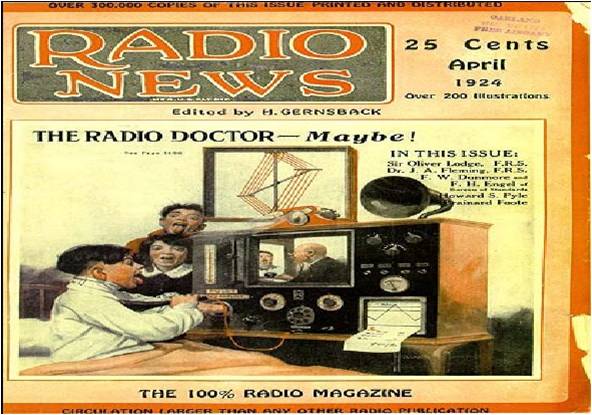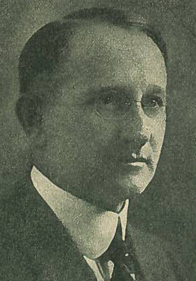License Reciprocity or Endorsement
 Fraud cases underscored the importance of administrative safeguards as a part of the licensure process and prompted boards to think broadly about interstate endorsement and license reciprocity. Reciprocal agreements between boards flourished in the early years of the 20th century. By the 1920's, reservations concerning such agreements were apparent. Even the language of the discussion shifted - the term 'reciprocity' fell into disfavor with its implication of a written agreement between two or more state boards. Instead, speakers began using the term 'endorsement' as one more reflective of a state board's decision to endorse the credentials of an applicant previously licensed in another state.
Fraud cases underscored the importance of administrative safeguards as a part of the licensure process and prompted boards to think broadly about interstate endorsement and license reciprocity. Reciprocal agreements between boards flourished in the early years of the 20th century. By the 1920's, reservations concerning such agreements were apparent. Even the language of the discussion shifted - the term 'reciprocity' fell into disfavor with its implication of a written agreement between two or more state boards. Instead, speakers began using the term 'endorsement' as one more reflective of a state board's decision to endorse the credentials of an applicant previously licensed in another state.
The shift away from reciprocity agreements stemmed from several factors. These include concerns that such agreements penalized the physician emigrating from a state that did not have a reciprocity agreement with the medical board in the new jurisdiction. These agreements were also seen as inadequate for identifying applicants possessing questionable moral character.
The early success of the license reciprocity/endorsement movement proved ironic. The rapid pace by which boards developed broad remedies to facilitate license portability seemed to be matched equally by complicating factors, e.g., discrepancies in the quality of the medical education behind the credential presented by physicians. The lesson absorbed by state boards was clear: There was more to fear from the small number of practitioners of poor character with good education than the more numerous physicians with a lesser education but solid moral character.
Discipline
 The Federation Bulletin routinely published news items that served the practical purpose of alerting other boards of illegal practitioners and actions taken by a sister board. No "central bureau" existed as an informational clearinghouse on frauds and practitioners of questionable character. The Federation negotiated an arrangement with the Biographical Department of the AMA to disseminate information on these characters with state boards encouraged to report disciplinary actions they had taken to this de facto central bureau.
The Federation Bulletin routinely published news items that served the practical purpose of alerting other boards of illegal practitioners and actions taken by a sister board. No "central bureau" existed as an informational clearinghouse on frauds and practitioners of questionable character. The Federation negotiated an arrangement with the Biographical Department of the AMA to disseminate information on these characters with state boards encouraged to report disciplinary actions they had taken to this de facto central bureau.
For most boards a more fundamental challenge existed. The early emphasis of their work centered on the licensing function. This stemmed from legislative failure in many states to codify the disciplinary function of the board. Only in the 20th century that the disciplinary and regulatory function of boards come to the forefront.
State boards began looking more critically at their disciplinary and enforcement functions. Too often their state's medical practice act was a disparate amalgamation of individual laws rather than a single piece of overarching legislation. The resulting legislation was almost unenforceable.
"Developing appropriate investigative mechanisms proved challenging for boards grappling with the problem of individuals seeking a medical license by fraudulent means. Diploma mill scandals in California, Connecticut, Missouri and Arkansas underscored the need for continued vigilance on the part of medical boards and prompted the interest of newspapers across the country."
State Boards and Medical Education
State medical boards made significant progress in mandating higher standards for medical education though much work remained to be done. Abraham Flexner's influential 1910 report assessing medical education in the United States and Canada devoted an entire chapter to state medical boards and their role in facilitating quality medical education. Yet Flexner was unequivocal in recognizing the contribution of state boards, calling them ".the instruments through which the reconstruction of medical education will be largely effected."
From the time of its founding, the Federation spent considerable energy on the topic of medical education. In 1916, the Federation established a Committee on the Standardization of Medical Colleges. Their recommendations built upon the momentum from state boards establishing clear educational requirements. In the span of a single generation, state boards assisted in transforming medical education through mandated higher standards as part of the requirements for licensure. In 1904, only 10 states required a high school diploma to obtain a medical license; no state yet required college course work. By 1929, 43 states mandated 1-2 years of college course work in addition to the high school diploma.
The complementary efforts of the state boards, the Association of American Medical Colleges and the AMA Council on Medical Education wrought major improvements in US medical education. The number of Class C (or after 1928, "nondescript") medical schools dropped markedly. Where once only 31 medical schools were recognized by all state boards (1914), 70 schools enjoyed such recognition in 1927.
By 1929, the conversation between the medical education and licensing communities shifted to avoiding "duplication" of effort in overseeing medical education and avoiding overly detailed and inelastic state requirements that hampered curricular changes. The Federation agreed and in 1929 its membership called for revisions to their medical practice acts that "conform[ed] as far as possible with the principles" of the AAMC.
Professional Tensions and Basic Science Laws
Neither the Federation nor state boards were immune to the sentiments prevailing in post-war America. Language such as "alien invasion" crept into the Federation Bulletin. State legislatures amended their medical practice acts to require US citizenship as a condition for medical licensure. Eleven states did so by 1926; 15 others required naturalization papers or a declaration of intent to have been filed.
 More significant tensions within the medical profession arose from the burgeoning number of individuals treating patients in some form or fashion. Physician members of state medical boards often looked suspiciously toward "drugless healers," e.g., osteopaths, chiropractors, Christian Scientists. Mainstream physicians charged these groups with inadequate education and training and a tendency to stray outside their system to include treatment options that fell under the statutory definition of the practice of medicine. In 1917, the Federation called this the "most important problem" facing state boards. The animosity directed toward these groups was noteworthy for the relentless nature of the attacks and the use of disparaging terms such as "cults."
More significant tensions within the medical profession arose from the burgeoning number of individuals treating patients in some form or fashion. Physician members of state medical boards often looked suspiciously toward "drugless healers," e.g., osteopaths, chiropractors, Christian Scientists. Mainstream physicians charged these groups with inadequate education and training and a tendency to stray outside their system to include treatment options that fell under the statutory definition of the practice of medicine. In 1917, the Federation called this the "most important problem" facing state boards. The animosity directed toward these groups was noteworthy for the relentless nature of the attacks and the use of disparaging terms such as "cults."
Reasonable individuals sought appropriate accommodations and tried to curb the inflammatory language. Federation President David Strickler condemned the "vindictive spirit" within the profession and called for an independent clinical study of systems of healing. Before such a proposal could gain support, independent initiatives in Wisconsin and Connecticut channeled discussions into an entirely new direction - basic science laws.
Anyone treating the sick would first have to pass a basic science examination and present this credential to the respective licensing board. The licensing board could then accept this credential in lieu of further examination in the basic sciences as part of its requirements. This model soon spread to 9 more states. Data indicates these examinations presented a major hurdle to the individuals taking them. The Federation feared these laws trended in a direction inconsistent with the organization's long-standing position that the public in each state was best served by a single board of medicine.

